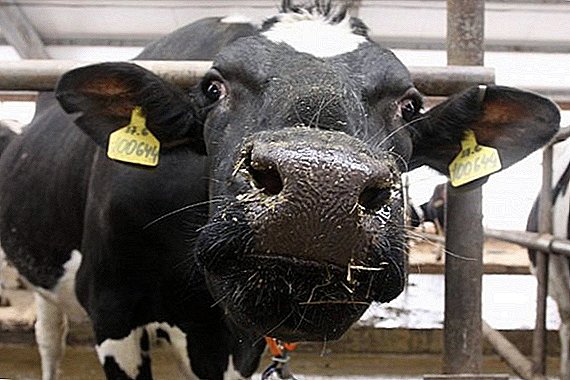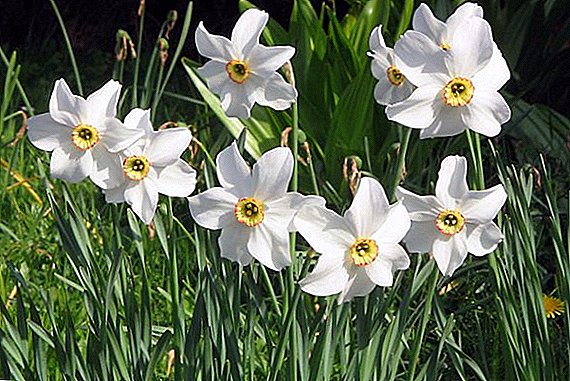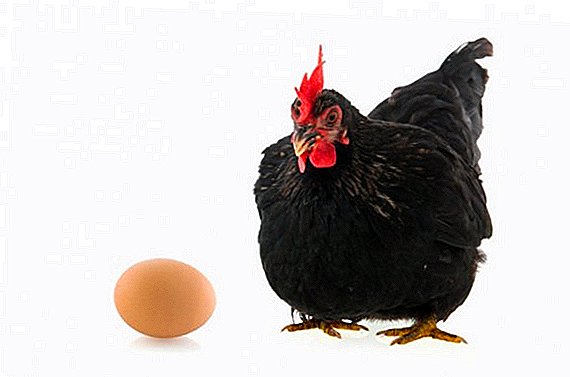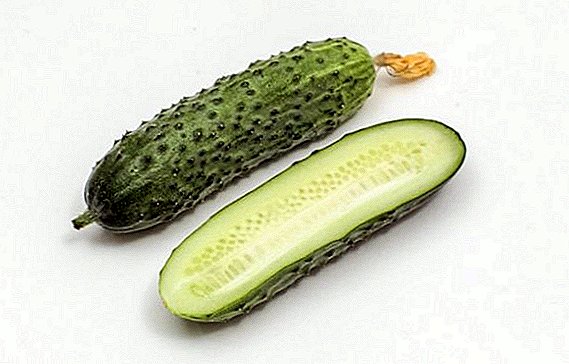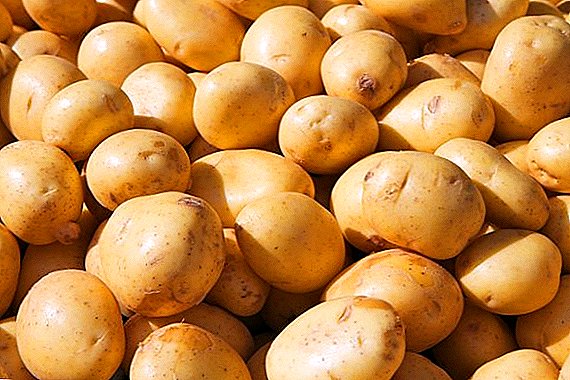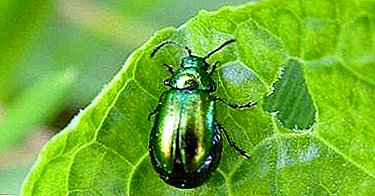
Sorrel is an unpretentious perennial plant rich in vitamins, minerals and organic acids. In some cases, the plant may be damaged and unfit for consumption. This happens quite often, but why is this happening?
Consider why the leaves become leaky, who eats sorrel, what exactly needs to be done, how to deal with pests, how to treat the plant so that there are no holes and it does not die?
Why is all the greens in the hole?
Holes on the leaves of sorrel problem common, blame - pests, which can be several. Who eats the leaves of the plant in the garden - consider below.
Green bugs
It is possible to see either the larva of the pest of a yellow shade, or of the blue-green itself with the ebb of a bug.

Slugs
If the leaves are not only holes, but also a silver trail, then this is definitely slugs. Especially they like wet and wet weather.

Scoop (sorrel sawfly)
The scoop is another pest - a butterfly with dark brown wings up to 5 cm long.
A scoop and its caterpillar eat large holes in the leaves, and closer to autumn, plants gnaw around the ground.
Sorrel sawfly is a hymenoptera up to 32 mm long. This pest does great damage, the caterpillars eat the leaves completely, leaving only the veins of the leaf plate.

Do these pests spread to other plants?
It is necessary to fight pests, as they contribute to the spread of disease. For example, the scoop caterpillar is the worst agricultural pest, it is omnivorous. Loves:
- cereals;
- potatoes;
- beetroot;
- bow;
- garlic;
- corn;
- tomatoes;
- cucumbers;
- okra;
- cabbage.
During the daytime, the caterpillars hide from sunlight under the leaves of the plants or in the upper layer of the soil, where it can destroy the seeds and seedlings.
What to do and how to treat the grass: effective folk remedies
Who eats the plant figured out earlier, now let's talk about how to process the culture. There are plenty of tools for pest control.including folk. One of the simplest and safest methods for the environment is to pollinate a garden or vegetable garden with grass powder or monopowder, the choice is great, and it will do:
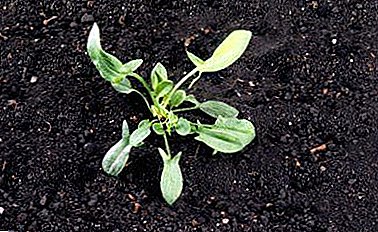 mustard;
mustard;- dope
- tansy;
- chamomile;
- sagebrush;
- tobacco;
- celandine.
What to water the plant so that there are no holes? Decoctions and infusions of these plants are useful for spraying the entire garden or large area. For greater effect, it is recommended to add soap to the decoction: it is necessary so that the whole mixture adheres better to the leaves.
For the preparation of infusions can be used not only flowers, but also garden cropsFor example, husks, heads, greens of onions and garlic, leaves and roots of horseradish, stalks and leaves of tomatoes, both fresh and last year.
Using ash
To get rid of slugs, you can sprinkle the earth with lime, superphosphate or ash. Can be used for dusting sorrel mixture of ash, dry mustard and black hot pepper in equal proportions. There is another option for spraying: dilute wood ash in cold water and add soap. For the destruction of pests is usually enough one such procedure.
Tobacco dust
Tobacco dust will be an excellent substitute for ash. To combat the leaf beetle, an effective means is to dust the plants with a mixture of wood ash and tobacco dust in equal proportions. Usually, within 5 days you can cope with the pest.
Tansy Powder
Tansy is also an excellent and affordable pest control tool. It is used both as a powder for pollination and as a decoction.
So, to get a solution for spraying, 2 kilograms of tansy need 10 liters of boiling water, the mixture should stand for a day. Then boil for half an hour, strain and add another 10 liters of water. The resulting solution is sprayed garden or vegetable garden.
For even greater benefit, you can add soap to the decoction. As a rule, 40 grams of soap is enough to dissolve in 10 liters of water.
How to deal with chemicals?
 Chemicals are recommended for emergency use only.if the land is heavily infected. You can use biological products, which are based on the waste products of fungi, bacteria and other microorganisms. The treatment should be carried out in a dry, windless weather. Eating herbs after processing is allowed after 5 days.
Chemicals are recommended for emergency use only.if the land is heavily infected. You can use biological products, which are based on the waste products of fungi, bacteria and other microorganisms. The treatment should be carried out in a dry, windless weather. Eating herbs after processing is allowed after 5 days.
Is it always possible to use chemistry? If we proceed from the fact that pests must be destroyed at any cost, this is a very dangerous intention. Pests are also members of the food chain, they are fed not only by birds, but also amphibians, hedgehogs, and other insects.
Beneficial insects will die first when using pesticides, their numbers will recover only after the pests multiply in order to maintain a balance in nature, respectively, until the biological equilibrium is disturbed, the pests will multiply uncontrollably, which means the pesticides will have to be re-used.
As a result, product quality, habitat and overall quality of life will deteriorate significantly due to environmental poisoning.
The list of drugs and their price
| A drug | Price in Moscow | Price in St. Petersburg |
| Biologics | ||
| Fitoverm, 4 ml | from 12 rub. | from 10 rubles |
| Sparkle, 5 ml | from 18 rub. | from 22 rub. |
| Tanrek, 1 ml | from 10 rubles | from 9 rub. |
| Aktara, 1.2 ml | from 40 rub. | from 44 rub. |
| Insecticides | ||
| Decis, 1 gr | from 34 rub. | from 34 rub. |
| Bazudin, 30 gr | from 35 rubles | from 35 rubles |
| Arrivo, 5 l | from 6000 rub. | from 6600 rub. |
| Sherpa, 1.5 ml | from 10 rubles | from 10 rubles |
How to prevent the problem?
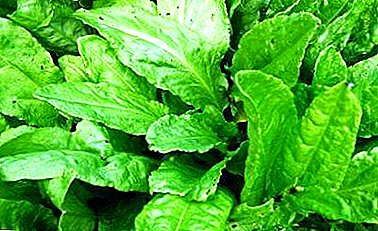 The most effective pest control measure is digging and loosening the soil, in which pupae and caterpillars are destroyed.
The most effective pest control measure is digging and loosening the soil, in which pupae and caterpillars are destroyed.- Buryan is also a source of food and egg-laying of moths of the moths, therefore regular removal of weeds, a guarantee of the health of the garden or vegetable garden.
- Against butterfly scoops, you can put traps with a fermenting drink or molasses: compote, beer, kvass, malt, honey.
- Spraying herbs and flowers are well-proven, and planting fragrant plants such as coriander or basil, chamomile or calendula will help scare off pests.
- Pests do not like natural fertilizers, feed young cultures with slurry.
Slugs damage mainly leaves and stems. If amphibians or hedgehogs live on the site, then the pests do not pose a serious danger, but if they are not there, slugs can become a real disaster, especially in rainy summer, in areas located in lowlands or in the shade.
In dry weather, it is enough to water only in the morning and exclude evening watering. In rainy time and in May, when young growth is born, and old ones leave wintering places, if there are raw lowland areas near the garden, then tin, roofing material, old roofing iron, thick cardboard or burlap can be set as a barrier.
Slugs that are already in the garden can be caught using traps.using wet rags, burlap or wet newspapers. A good bait for slugs is beer or sweet water. To protect plants, you can also install barriers in the form of sand mixed with spruce needles.
Electric lamps will help catch the scoop, install a lantern near the house, and hang adhesive tapes next to it. It is known that scoops prefer for wintering hollow trees. Therefore, it is necessary to monitor the condition of the trees, take care of the trunk, in time filling up the recesses or hollows.
Mechanical methods of struggle are also very effective. and, as a rule, do not bear harm for the environment, regularly inspect the leaves in time to destroy the egg-laying, manually collect the caterpillars.
Sorrel is one of the earliest cultures. Growing it is the best way to provide yourself with vitamins. Sorrel is completely unpretentious, resistant to cold and, therefore, its breeding is quite simple and usually successful.
If you follow the rules, then you can grow sorrel in one place for no longer than 4 years. So you save plants from diseases and parasites. It is worth paying attention to the fact that the high susceptibility of pests to vegetable crops suggests that the plants are weakened and it is likely that it is necessary to reconsider the approach to their agricultural activities.


 mustard;
mustard; The most effective pest control measure is digging and loosening the soil, in which pupae and caterpillars are destroyed.
The most effective pest control measure is digging and loosening the soil, in which pupae and caterpillars are destroyed.
